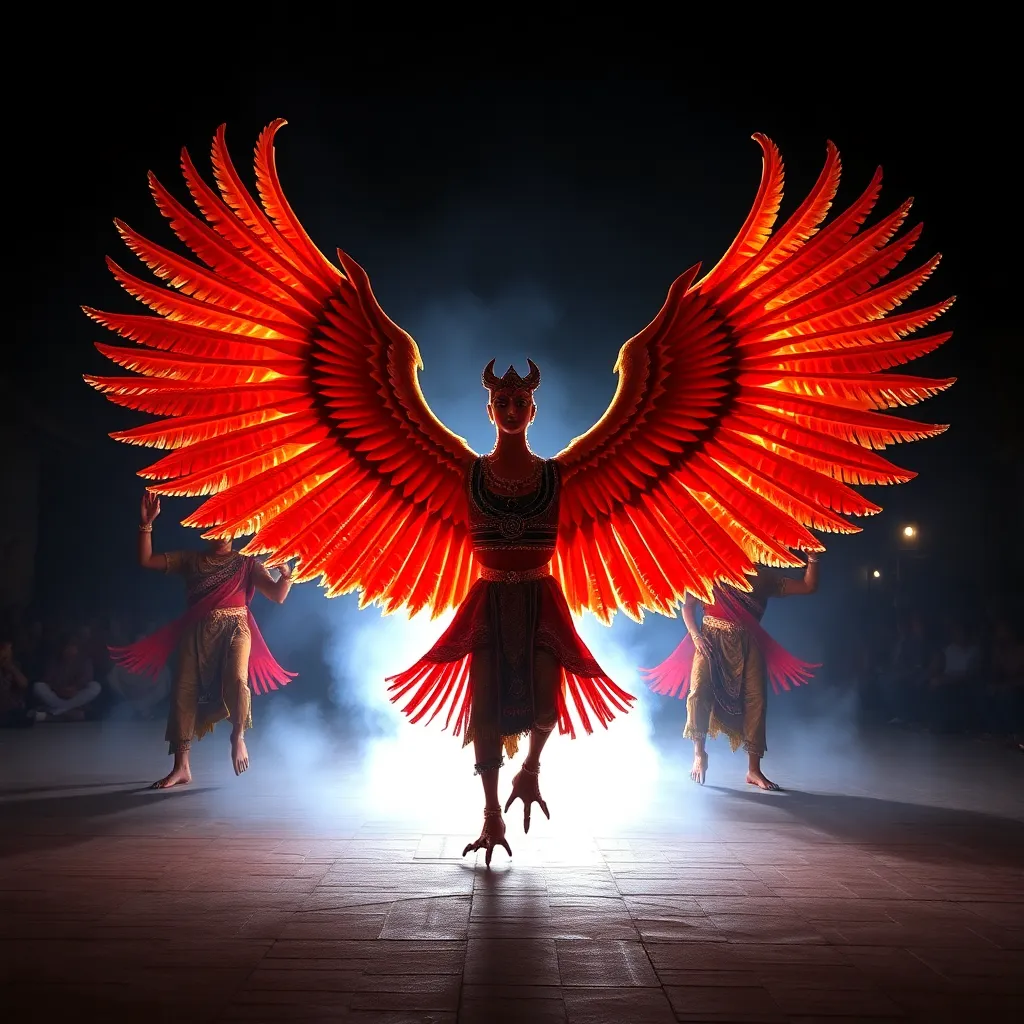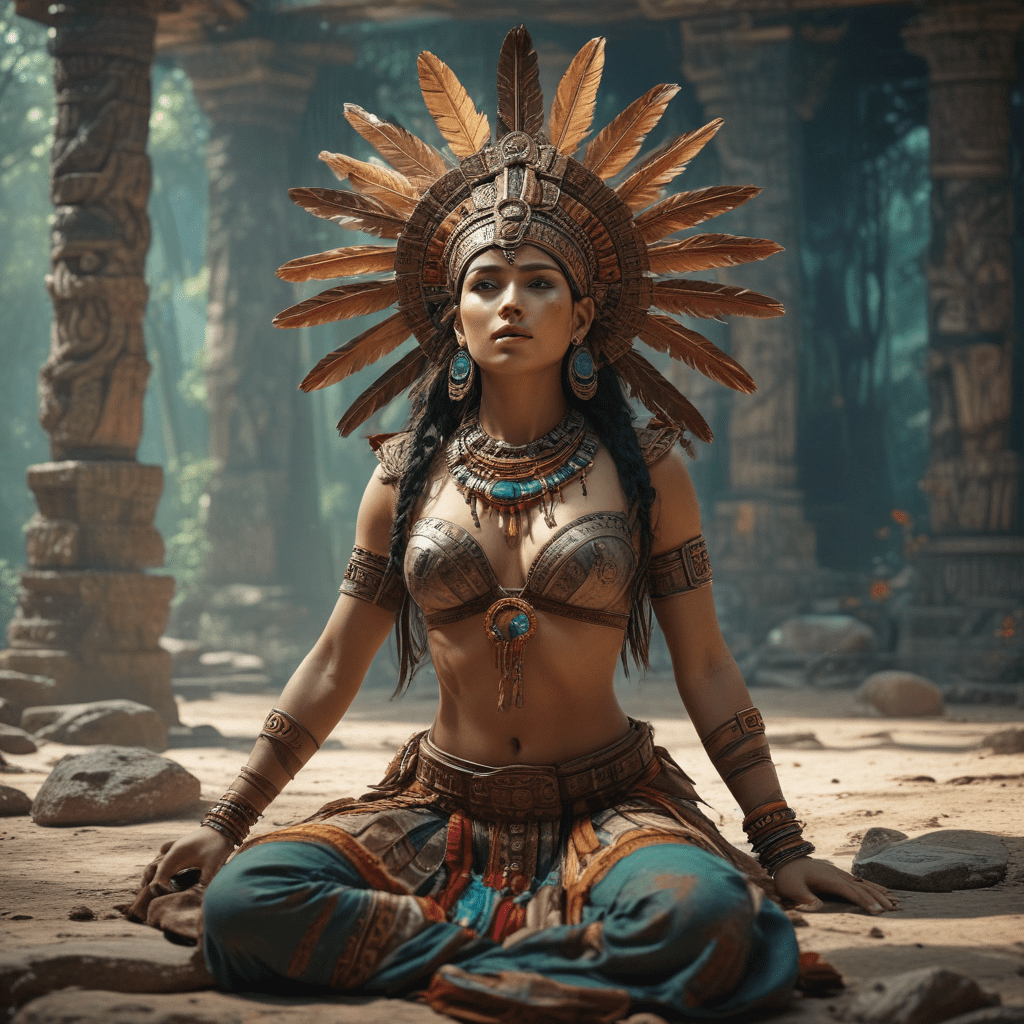The Garuda Dance: Examining the Ritualistic Performance and its Cultural Significance
I. Introduction
The Garuda Dance is a captivating and vibrant ritualistic performance that holds deep cultural significance for various communities in Southeast Asia, particularly in Indonesia and India. This traditional dance is rooted in mythological narratives and serves as a medium for expressing cultural identity and communal values. The importance of ritualistic performances like the Garuda Dance cannot be overstated, as they play a crucial role in maintaining the cultural fabric of societies. This article aims to explore the historical background, performance elements, ritualistic aspects, cultural significance, and the current state of the Garuda Dance.
II. Historical Background of the Garuda Dance
The origins of the Garuda Dance can be traced back to ancient Hindu and Buddhist traditions, where Garuda is depicted as a powerful bird-like creature and the vehicle of the god Vishnu. The evolution of this dance form has been influenced by various cultural interactions over centuries.
A. Origins and evolution of the dance
The Garuda Dance likely emerged from ancient rituals and storytelling traditions, evolving through the ages as a form of artistic expression. It embodies narratives of heroism, spirituality, and the struggle between good and evil.
B. Cultural influences and regional variations
- In Indonesia, particularly in Bali, the Garuda Dance has been adapted into a more theatrical form, often performed during religious ceremonies and cultural festivals.
- Indian versions of the dance reflect local customs and interpretations of the Garuda mythology, showcasing the diverse expressions of this theme across different regions.
C. The mythological significance of Garuda in Hindu and Buddhist traditions
In both Hinduism and Buddhism, Garuda symbolizes strength, power, and protection. The dance often incorporates elements of these mythologies, portraying Garuda’s role in various legends, which enhances its spiritual and cultural depth.
III. Elements of the Garuda Dance Performance
The Garuda Dance is characterized by its rich visual and auditory components, which together create a compelling performance that captivates audiences.
A. Costumes and traditional attire
The costumes worn during the Garuda Dance are elaborate and vibrant, often featuring:
- Brightly colored fabrics that symbolize various aspects of the Garuda mythology.
- Intricate masks that depict the fierce features of Garuda and other characters from the stories.
- Accessories such as jewelry and headdresses that enhance the visual appeal of the performance.
B. Music and instrumentation
The musical accompaniment for the Garuda Dance typically includes traditional instruments such as:
- Gamelan ensembles in Indonesian performances, featuring metallophones, drums, and bamboo flutes.
- Classical Indian instruments like tabla and sitar in Indian interpretations.
The rhythm and melody of the music are carefully synchronized with the dancers’ movements, creating a harmonious experience.
C. Choreography and movement styles
The choreography of the Garuda Dance is dynamic and expressive, with movements that reflect the themes of the narratives being portrayed. Dancers often use:
- Fluid and graceful motions to represent the flight of Garuda.
- Powerful and sharp movements to convey the strength and ferocity of the character.
IV. The Ritualistic Aspects of the Garuda Dance
The Garuda Dance is not merely a performance; it is embedded within rituals and cultural practices that enhance its significance.
A. Context of performance: ceremonies and festivals
Typically performed during religious ceremonies, festivals, and cultural celebrations, the Garuda Dance serves as a means of honoring deities and invoking blessings. It is often featured in:
- Temple festivals in Bali.
- Hindu religious ceremonies in India.
B. Symbolism of the dance movements
Every movement in the Garuda Dance carries symbolic meaning, reflecting themes such as:
- Protection and strength, as portrayed by the powerful stances of the dancers.
- Harmony and balance, seen in the fluid transitions and formations.
C. Role of the performers and audience interaction
The performers of the Garuda Dance are not only entertainers but also storytellers and cultural ambassadors. Audience interaction is encouraged, creating a communal experience that fosters connection and appreciation for the art.
V. Cultural Significance of the Garuda Dance
The Garuda Dance plays a vital role in preserving cultural heritage and conveying stories that are integral to the identity of communities.
A. Preservation of cultural heritage and tradition
As a traditional art form, the Garuda Dance helps to maintain cultural narratives and practices, passing them down through generations. It serves as a living testament to the history and values of the people.
B. The dance as a medium of storytelling
The Garuda Dance is rich in storytelling, often depicting tales of valor, spirituality, and morality that resonate with audiences. This storytelling aspect is crucial for cultural transmission.
C. Influence on contemporary art and performance
In modern times, the Garuda Dance has inspired contemporary artists and performers, leading to innovative adaptations that blend traditional elements with modern artistic expressions.
VI. The Garuda Dance in Modern Society
As societies evolve, the Garuda Dance faces both challenges and opportunities in contemporary settings.
A. Adaptations and innovations in performance
Contemporary interpretations of the Garuda Dance often incorporate:
- Modern choreography and dance techniques.
- New technologies such as lighting and multimedia presentations.
B. The dance’s role in cultural tourism
The popularity of the Garuda Dance has grown in the realm of cultural tourism, attracting visitors who seek authentic experiences. This has led to:
- Increased visibility for traditional performances.
- Economic benefits for local artists and communities.
C. Challenges faced in maintaining traditional practices
Despite its popularity, traditional practices related to the Garuda Dance are at risk due to:
- Commercialization and oversimplification for tourist audiences.
- Declining interest among younger generations in traditional arts.
VII. Case Studies: Notable Performances and Practitioners
Several renowned Garuda dance troupes and practitioners have made significant contributions to keeping this art form alive.
A. Highlighting renowned Garuda dance troupes
Some notable troupes include:
- The Bali Troupe, known for its authentic representation of Balinese culture.
- The Indian Garuda Dance Collective, which showcases the dance’s integration into Indian classical traditions.
B. Interviews with performers and choreographers
Insights from performers reveal their passion for the dance and its cultural significance. Many express a desire to bridge traditional practices with modern interpretations.
C. Analysis of significant performances and their impact
Noteworthy performances have garnered attention at international festivals, raising awareness about the Garuda Dance and its cultural narratives.
VIII. Conclusion
In conclusion, the Garuda Dance stands as a vital expression of cultural identity and heritage. Its historical roots, ritualistic elements, and contemporary adaptations reflect the dynamic nature of cultural practices. As we look to the future, it is essential to foster appreciation and support for traditional arts, ensuring that the Garuda Dance and similar heritage forms continue to thrive.
By encouraging education, engagement, and respect for these traditional performances, we can help preserve their significance for future generations.



